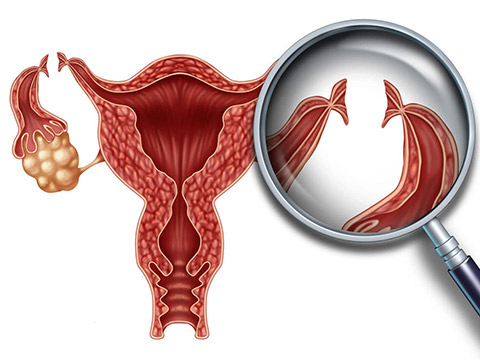Anesthesia
 Anesthesia is often given to patients undergoing surgery. Your anesthetist will administer medicine to you so that you will not feel pain during surgery. He/she can do so by way of general anesthesia in which the whole body is without any sensation; he/she can also give a regional or local anesthesia, in which only part of the body is without sensation while you remain awake, or you can be made sleepy with sedation.
Anesthesia is often given to patients undergoing surgery. Your anesthetist will administer medicine to you so that you will not feel pain during surgery. He/she can do so by way of general anesthesia in which the whole body is without any sensation; he/she can also give a regional or local anesthesia, in which only part of the body is without sensation while you remain awake, or you can be made sleepy with sedation.
Your Anesthetist will choose a suitable combination of drugs to give your anesthesia. The choice of drugs, the dosage, the timing will depend on your general health, specific health problems, any medications that you may be taking, you and your family’s history of allergies and reactions to drugs. When administering an anesthetic the Anesthetist must prevent worsening of your existing health problem. (for example, irregular heart beats, diabetes, high blood pressure etc. ) Because of the above considerations, you must complete the pre-anesthetic questionnaire accurately. When your Anesthetist is misinformed, you run the risk of getting an anesthetic that may not be the best for you.
Certain pre-anesthetic instructions were issued to you. These instructions are for your safety during anesthesia. For example, adults are requested not to eat or drink anything starting midnight before the day of anesthesia. A child ( less than 12 years old ) can drink clear fluids (water, soft drinks, broth, but not milk ) up to 3 hours before the operation. This keeps the stomach empty so that if one vomits under anesthesia, the danger of getting stomach contents into the lung is minimized. Your Anesthetist may cancel the surgery if the pre-anesthetic instructions were not followed.
The anesthesia most likely begins with an intravenous. The pain caused by the intravenous needle is often the patient’s only unpleasant recollection; especially for the younger patients. The skin of an intravenous site can be numbed if a medicine-containing paste (available in drug stores) is applied for about one hour.
Complications of anesthesia
Your Anesthetist will take every possible step to ensure that you have a safe anesthetic. However, some patients may experience side-effects of the anesthetic drugs. One of the most common side-effects is nausea and vomiting after a general anesthetic (from 3 to 5%). Other side-effects include dry throat,sore throat, sore jaw, sore muscles and perhaps some short-term memory loss. The vast majority of patients recover from these side-effects in a day or so.
Spinal or epidural anesthesia which is given by a small needle in the back, is sometimes more appropriate for some type of operations. Nausea and throat problems are avoided, but slight headache lasting for a few days may happen in about 1 to 3 % of cases.
The placement of a tube in the trachea may be required for certain operations. Instruments may be used to keep the mouth open and push the tongue out of the way. This being the case, sometimes damage to the patient’s teeth, caps on the teeth, or bridges are inevitable, despite the highest degree of care performed with expertise by the Anesthetist.
Transfusion
Sometimes the transfusion of blood products is necessary. These products include red blood cells, platelets, plasma, albumin, and coagulating factors.Transfusion of blood products is done only when the Anesthetist has exhausted other means of replacing lost blood during an operation and with the prior consent of the patient. However, blood transfusion can never be made without some risks.
Autologous blood, that is, blood collected from the same individual is the safest of all. This is blood collected in advance. Because it involves collection and packaging there is a risk with contamination, by-products of storage and mis-identification.
Allogenic blood, that is, blood collected from donors other than the recipient is the main source of blood for transfusion in hospitals. The Red Cross who supplies the blood will have performed tests on the blood for infective agents and treated the blood so that any disease causing agents, if they are present but do not show up on the tests, are destroyed. Hepatitis, HIV (the virus associated with AIDS) transmission, and bacterial infection are the main concerns.
Relatively very few surgeries will require the transfusion of blood or blood products. Before the surgery, your surgeon will decide if blood should be reserved in the blood bank of the hospital for transfusion. Even if such reservation is not made, we can still find the appropriate blood to transfuse in a very short period of time.
Pain
Many methods are used to prevent or minimize pain after an operation, including: local anesthetics, epidural or spinal medications, patient controlled intravenous medications (PCA), intramuscular injections, and medicine by mouth.Some are more effective than others, but they may be associated with more possible side effects. For example, narcotics given by epidural or spinal routes sometimes cause itchy skin or nausea.
Severe drug reactions
Severe drug reactions are very rare. When it occurs in a hospital, they are quickly recognized by the health care team and effectively dealt with.

Pregnancy
A woman who is pregnant may require anesthesia for operations not related to the pregnancy. The Anesthetist will try his/her best to provide anesthesia which is appropriate for the operation, and least risky to the pregnancy. Nevertheless, the risks to the fetus may be increased with some type of surgery.
Pain relief in labour and delivery
Epidural analgesia is a very effective method of pain relief. Contraindications include: bleeding and blood clotting disorders, some neurological diseases and skin infections in the lower back. Common side effects include decreases in blood pressure and shivering. It is usual to feel tingling, numbness and weakness in the legs. Less common risks include headache caused by inadvertent puncture of the dura membrane and dizziness caused by anesthetic absorption.
Very rare complications are total spinal anesthetic caused by unintentional injection of local anesthetic into the spinal fluid and convulsions or heart rhythm disturbance caused by intravenous absorption. Temporary paralysis or prolonged epidural block have been reported in the literature but they are extremely rare.
Cesarean section
Spinal or epidural anesthesia is more often used than general anesthesia. Possible side effects include: itchness, nausea, and bladder retention. General anesthesia may have more serious complications including problems with breathing for the patient and vomiting under anesthesia and the vomitus entering the lung.
After the anesthesia
You will be alert within 5 to 10 minutes after an anesthetic; but many people cannot remember events in the first half hour. If the plan is to send you home on the same day of the surgery, most likely you will leave the hospital about 2 hours after your anesthetics.
For the first 8 hours after that, you
- should not operate any machinery which may require fine coordination or fast responses, e.g. driving a car
- should be cautious with the additive effects of tranquilizers, alcohol and narcotics, mindful that anesthetics is still in your body
- should drink fluids initially, and if it is tolerable, have something like soup, it is better to stay away from solid food like pieces of meat, e.g. a steak
- Children may be so upset with pain that they can not take medications by mouth. If so, you can consider giving them pain medicine in the form of rectal suppositories






